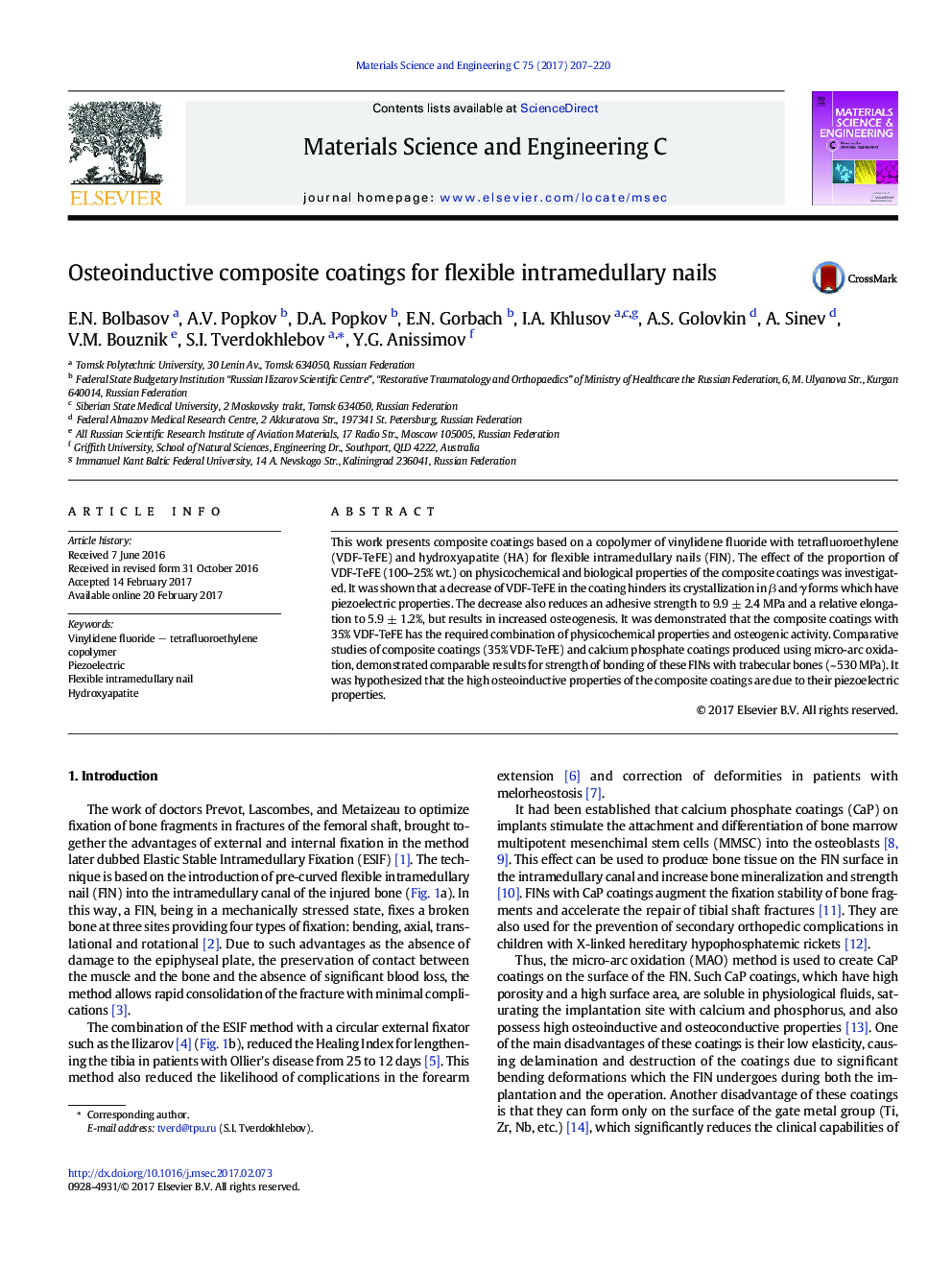| Article ID | Journal | Published Year | Pages | File Type |
|---|---|---|---|---|
| 5434818 | Materials Science and Engineering: C | 2017 | 14 Pages |
â¢VDF-TeFE copolymer/HA composite coatings for flexible intramedullary nail were designed.â¢The influence of the amount of VDF-TeFE on properties of composites was studied.â¢VDF-TeFE has electrical activity phases regardless of its content in the composite.â¢Osteoinductive properties, likely is caused by piezoelectric properties of the composite.
This work presents composite coatings based on a copolymer of vinylidene fluoride with tetrafluoroethylene (VDF-TeFE) and hydroxyapatite (HA) for flexible intramedullary nails (FIN). The effect of the proportion of VDF-TeFE (100-25% wt.) on physicochemical and biological properties of the composite coatings was investigated. It was shown that a decrease of VDF-TeFE in the coating hinders its crystallization in β and γ forms which have piezoelectric properties. The decrease also reduces an adhesive strength to 9.9 ± 2.4 MPa and a relative elongation to 5.9 ± 1.2%, but results in increased osteogenesis. It was demonstrated that the composite coatings with 35% VDF-TeFE has the required combination of physicochemical properties and osteogenic activity. Comparative studies of composite coatings (35% VDF-TeFE) and calcium phosphate coatings produced using micro-arc oxidation, demonstrated comparable results for strength of bonding of these FINs with trabecular bones (~ 530 MPa). It was hypothesized that the high osteoinductive properties of the composite coatings are due to their piezoelectric properties.
Graphical abstractDownload high-res image (124KB)Download full-size image
